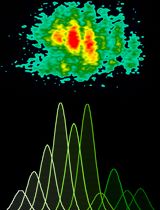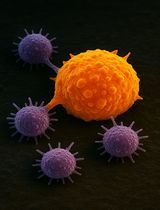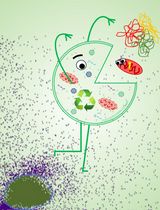- EN - English
- CN - 中文
Skin Transplantation and Lymphoid Organ Analysis in Mice
小鼠中皮肤移植和淋巴器官分析
发布: 2020年02月20日第10卷第4期 DOI: 10.21769/BioProtoc.3531 浏览次数: 4934
评审: Meenal SinhaLokesh KalekarAnita Umesh

相关实验方案

使用康可藻红素刺激冷冻保存的猪外周单个核细胞进行增殖检测,并结合FCS ExpressTM 7.18软件分析
Marlene Bravo-Parra [...] Luis G. Giménez-Lirola
2025年06月05日 1640 阅读
Abstract
Skin transplantation in mice is an important procedure to evaluate immune responses generated against heterologous grafts, especially given its highly immunogenic nature. In fact, skin is one of the most challenging organs in terms of allograft retention. In this protocol, we provide a detailed procedure for skin grafting using the tail skin as donor organ that is grafted on the dorsal site of thoracic cage in a recipient mouse. We also provide protocols for the systematic analysis of lymphoid organ analysis in transplanted mice. Together these protocols may be valuable for evaluation of parameters that affect skin grafting, including genetic factors, immune cell activation as well as the analysis of compounds that may be useful in allowing graft tolerance.
Keywords: Skin transplantation (皮肤移植)Background
Transplantation of organs remains the only life-saving procedure for many end-stage organ failures. However, the success of organ transplantation is severely limited by first, the availability of a suitable donor with a matched Human Leucocyte Antigen (also known as HLA typing/organ matching), and second, the fact that even in cases of matched transplants, recipients have to be subjected to immunosuppressive therapy where multiple drugs are administered life-long, resulting in severe side effects (Lopez et al., 2006; Green, 2013; Rodriguez-Peralvarez et al., 2014). Therefore, a better understanding of the factors that allow graft acceptance, as well as the availability of sensitive protocols to assay immune cell activation are important. We have employed a mouse model for skin transplantation, where a biopsy from a tail skin is grafted onto the dorsum of a recipient mouse (Schmaler et al., 2014; Jayachandran et al., 2019). Such a procedure not only allows for relative ease of obtaining tail skin graft from a single donor for performing transplantation onto multiple recipients, but also aids in rapid assessment of the graft health status due to the presence of the characteristic hyperpigmented tail stripe (from melanin, a characteristic feature of healthy tail skin), that rapidly fades upon rejection, thereby allowing a relatively straightforward evaluation of its tolerance and/or rejection following transplantation.
Materials and Reagents
- For the skin transplantation protocol
- Mouth mask (Lyreco, catalog number: 5965655)
- Cotton swab (Carl Roth GmbH, catalog number: 31025060)
- Hansaplast Finger Strips (Beierdorf AG, catalog number: 76861)
- Histoacryl Tissue adhesive (Braun, catalog number: 1050052)
- Leukotape classic, 2 cm x 10 m (BSN Medical SAS, Ref: 02204-00)
- Sterile gauze, 5 x 5 cm, 8ply (MaiMed GmbH, catalog number: 21010)
- Tissue Culture dishes 10 cm, 60.1 cm2 (Huberlab, catalog number: 7.633102)
- Warm pad (Solis AG, Type 223)
- 1 ml syringes with 25 G needles or insulin syringes (BD, catalog number: 305501)
- Heating pad (surgery table with a heating block included; MD supplies, catalog number: 4507-1/)
- Cotton swabs (Schaffhauser, catalog number: P0-15117601)
- Mice (H2-bm12) (H-2bm12, McKenzie et al., 1979) and C57Bl/6
- CO2 for euthanization
- Wet food (100 g of dry food incubated at room temperature with 200 ml of drinking water O/N, 30 ml of mix is placed on a Petri dish per cage) (KLIBA, 3436 EXF12 M/R EXTRUDAT)
- Betadine standard solution (Mundipharma)
- Dafalgan (UPSA, Bristol Myers Squibb SA, 1340235)
- PBS, Phosphate-Buffered Saline, pH 7.4 (Invitrogen, catalog number: 10010015)
- Temgesic, Buprenorphine, 0.3 mg/ml (ESSEX Chemie AG, ATC N02AE01 number)
- Vaseline (Vifor SA)
- Isoflurane (Attane, SKU:RXISO-250)
- Vitamin A (Blache, catalog number: 1667290), 5 g, Bausch & Lomb for the vet ointment of the mice eyes
- 100% Ethanol, vendor (Sigma, catalog number: 02890)
- Foetal Calfs Serum (FCS) (PAA, catalog number: A15-101)
- Paracetamol-containing syrup (Bristol-Myers Squibb, DAFALGAN Sirup, 30 mg/ml)
- For the organ analysis
- 1 ml syringes with 25 G needles or insulin syringes (BD, catalog number: 305501)
- Gridded mesh (steel/nylon, Sefar AG, catalog number: 3053-0201-100-00)
- Neubauer chamber (BRAND, catalog number: 718605)
- Petri dishes 94 x 16 mm (Greiner, catalog number: 633102)
- 15 ml tubes (Sarstedt, catalog number: 62.554.502)
- 5 ml plungers (Omnifix, catalog number: 4616057V)
- 5 ml facs tubes (Falcon, catalog number: 352008)
- 96-well plate U bottom non-treated for culture (VWR, 351177 Falcon, 734-0955)
- Live/Dead Marker (Invitrogen, catalog number: L10119)
- 2% EDTA (Sigma, EDS-100g)
- ACK buffer (155 mM NH4Cl, 10 mM KHCO2, 1 mM EDTA, pH 7.4) to use for RBC lysis in organs
- Aqua dest. 10x BD FACS Lysing Solution (BD Biosciences, catalog number: 349202) (dilute with aqua dest) to use for RBC in blood
- FACS buffer (PBS, 2% FCS, 5 mM EDTA)
- Trypan blue stain (0.4%, Gibco, catalog number: 15250-061)
- FACS antibodies list example of panel which can be used:
CD3 (Clone 145-2C11, Biolegend, catalog number: 100308)
CD4 (Clone RM4-5, Biolegend, catalog number: 100512)
CD8 (Clone 53-6.7, Biolegend, catalog number: 100738)
CD19 (Clone 6D5, Biolegend, catalog number: 115508)
Gr1 (Clone RB6-8C5, Biolegend, catalog number: 108425)
CD62L (Clone Mel-14, Biolegend, catalog number: 104412)
CD44 (Clone A20, Biolegend, catalog number: 103030)
CD11b (Clone M1/70, Biolegend, catalog number: 101236)
CD80 (Clone 16-10A1, Biolegend, catalog number: 104702)
CD86 (Clone GL-1, Biolegend, catalog number: 105010)
Equipment
- Surgical instruments for the skin transplantation protocol
- Narrow pattern forceps (FST, catalog number: 11003-12)
- Fine iris scissor curved (FST, catalog number: 14095-11)
- Fine iris scissor (FST, catalog number: 14094-11)
- Mayo scissors (FST, catalog number: 14010-15)
- Artery scissors ball tip 11.5 cm (FST, catalog number: 14080-11)
- Tissue forceps (FST, catalog number: 11021-14)
- Carbon Steel, Surgical Blade No.20 (Swann-Morton LTD, catalog number: 3006)
- Surgical blade Handles (Swann-Morton LTD 20, Milian, catalog number: 132620SW)
- For the skin transplantation protocol
- Electric shaver (Moser Classic A, Barthaar, catalog number: 1040.0460)
- Ear tweezer (FST, catalog number: 24212-01)
- For the organ analysis
- BD FACS Canto II cytometer, IC/NO: 0000031701
- Vacuum pump (KNF Neuberger, catalog number:N816.3KN.18)
Software
- FlowJo software (LLC, BD (Becton, Dickinson & Company, https://www.flowjo.com/)
- BD FACSDiva Software (version8.0.1, firmware version 1.49 BD FACSCanto II)
Procedure
文章信息
版权信息
© 2020 The Authors; exclusive licensee Bio-protocol LLC.
如何引用
Ruer-Laventie, J., Jayachandran, R., Schmaler, M., Rossi, S. W. and Pieters, J. (2020). Skin Transplantation and Lymphoid Organ Analysis in Mice. Bio-protocol 10(4): e3531. DOI: 10.21769/BioProtoc.3531.
分类
免疫学 > 动物模型 > 小鼠
细胞生物学 > 基于细胞的分析方法 > 流式细胞术
免疫学 > 免疫细胞染色 > 流式细胞术
您对这篇实验方法有问题吗?
在此处发布您的问题,我们将邀请本文作者来回答。同时,我们会将您的问题发布到Bio-protocol Exchange,以便寻求社区成员的帮助。
提问指南
+ 问题描述
写下详细的问题描述,包括所有有助于他人回答您问题的信息(例如实验过程、条件和相关图像等)。
Share
Bluesky
X
Copy link










